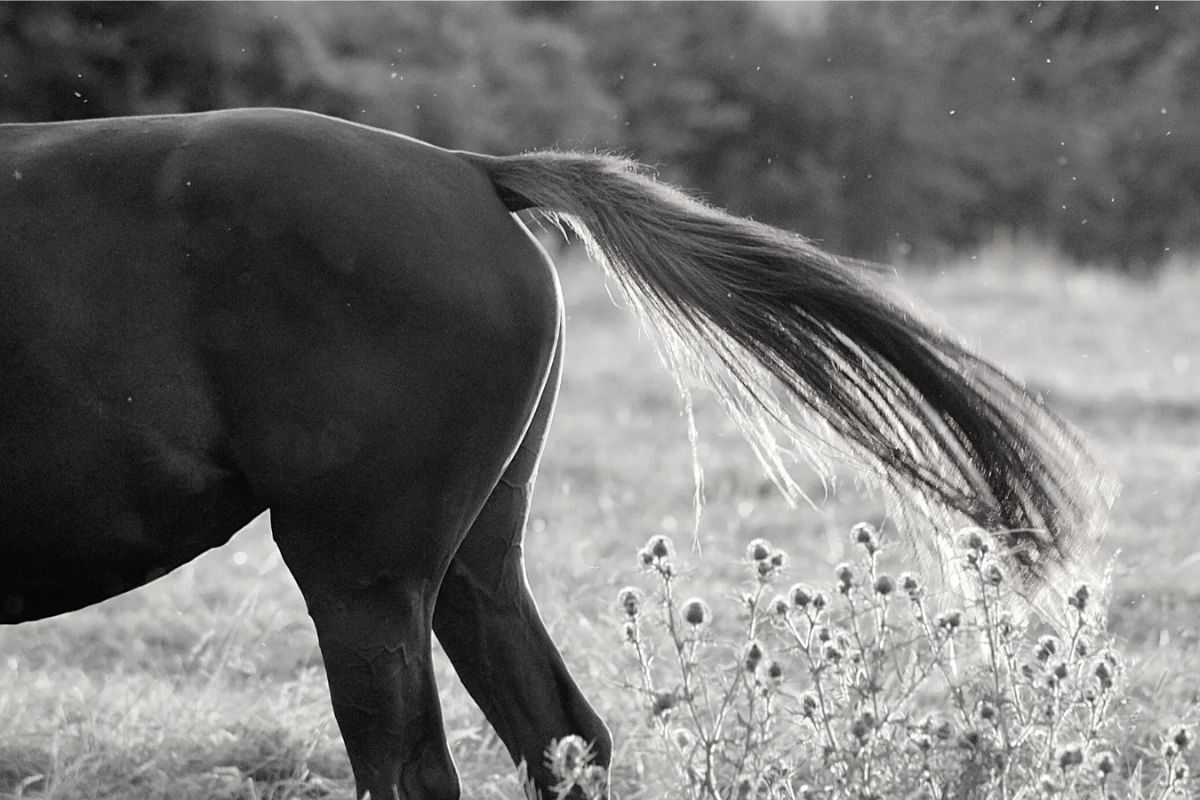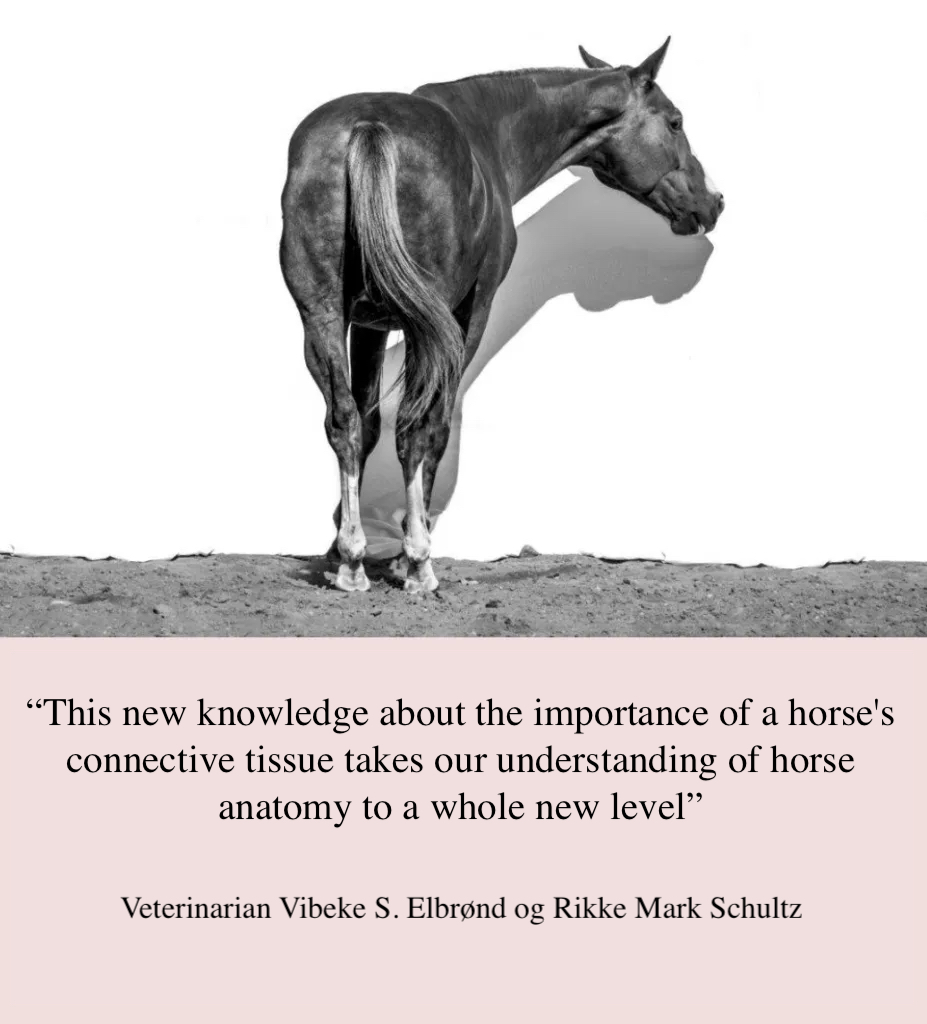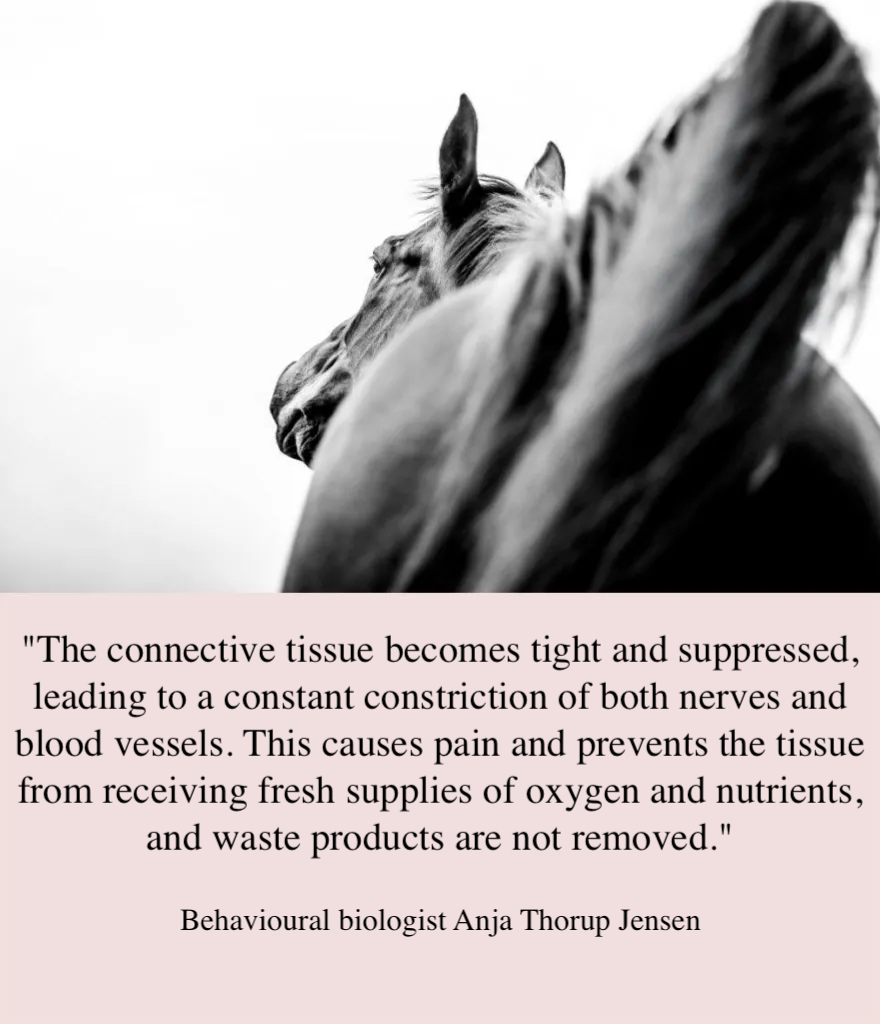Menu

Connective tissue, muscle tissue, muscle sheaths, and fascia - many names for a much-loved subject. Regardless of what one calls it, it essentially consists of dense, elastic bands that quite simply hold the body together. They exist in both horses and humans, but there's a suggestion that veterinary science has been slow to realise the crucial role that connective tissue plays in the wellbeing of a horse.
Related article: Borrelia in horses: What you should know

In a veterinary research article penned by Danish veterinarians Vibeke S. Elbrønd and Rikke Mark Schultz, it's concluded that a horse's connective tissue closely resembles that of a human. That means inflammation in a horse's connective tissue may cause far more pain than we have previously thought, and a lot of what has been treated as muscle pain in the past could very likely be rooted in inflammation of the tissue. It also suggests that veterinary science has been lagging behind in this area, more so than medical science. But now, treatment methods are slowly catching up. We'll try to delve into this a bit more for you.
To understand what connective tissue is, one can look at a chicken breast or a tenderloin. The white sheaths or threads that one usually removes before cooking the meat are connective tissues and they look roughly the same in a horse.
Simplistically, one could also compare connective tissue to the structure of a citrus fruit. The peel equates to skin, the fruit pulp to muscles, and all the white stuff surrounding the fruit pulp acts like connective tissue - it keeps the muscles together.
When you peel a citrus fruit, there's a white layer that covers all the fruit pulp, and when you then separate the orange segments, there's also a thin, white sheath around each segment.
If you finally try to separate the fruit pulp, you will notice that it's divided into small droplet-like pieces, each of which is surrounded by an ultra-thin, white sheath. The horse's muscles are encased in and connected by such thin, elastic sheaths, which keep everything in place.
Related article: Laminitis: Is it only the overweight horse at risk?

The crux of the matter is that a horse's connective tissue has only recently been 'discovered' as a serious potential cause of pain in horses. Whereas we've previously focused a lot on treating a horse's muscles, we've now realised how often the problem is actually with the connective tissue. The part of a horse's connective tissue system that connects to its muscles is called myofascia (myo = muscle), and if it's inflamed, it hurts.
But how does inflammation occur? According to Anja Thorup Jensen, an animal behaviourist specialising in horses, problems arise when the tissue becomes stressed.
She explains that many horse owners mistakenly believe that the connective tissue can only contract in connection with the horse using its muscles, and that tenderness can only occur when the horse is physically active. However, one should be aware that a horse's connective tissue can also be affected when the horse is subjected to mental or emotional stress. There are also studies that demonstrate this, Anja writes.
Related article (advertisement): NAFs popular product: Five Star Metazone
There is both deep and superficial connective tissue, all of which branches in between the horse's muscles. The conclusion of Elbrønd & Schultz's study is that large parts of the connective tissue don't merely bind individual muscles together, but it stretches as long strands throughout the entire body of the horse.

Precisely because the connective tissue and its nerve pathways stretch so far, an inflammation will not just cause pain in one area of the horse, but will affect a large part of its body. This means that even if the horse is, for example, limping on a hind leg, tender in the back, or suffering from girth cramps, the actual source of the pain may be located somewhere completely different.
"Due to the connection between the parts of a horse's connective tissue and their dynamic and static contractility (the tissue's ability to contract), it's absolutely conceivable to imagine how a biomechanical problem in one part of the horse could easily spread to another part of the body. It could be, for example, that lameness in one leg is a result of scar tissue in the connective and muscle tissue of the diagonally opposite leg." - Vet Vibeke S. Elbrønd and Rikke Mark Schultz.
Of course, it's up to your vet to determine whether it's your horse's connective tissue that's causing the problem, if your horse is in pain. Thankfully, there are many ways to treat this, so don't despair if the vet starts talking about stressed or inflamed fascia. Instead, be glad that you've hopefully found out what's really causing your horse's pain.
Related study: The horse’s back is a hotspot for pain